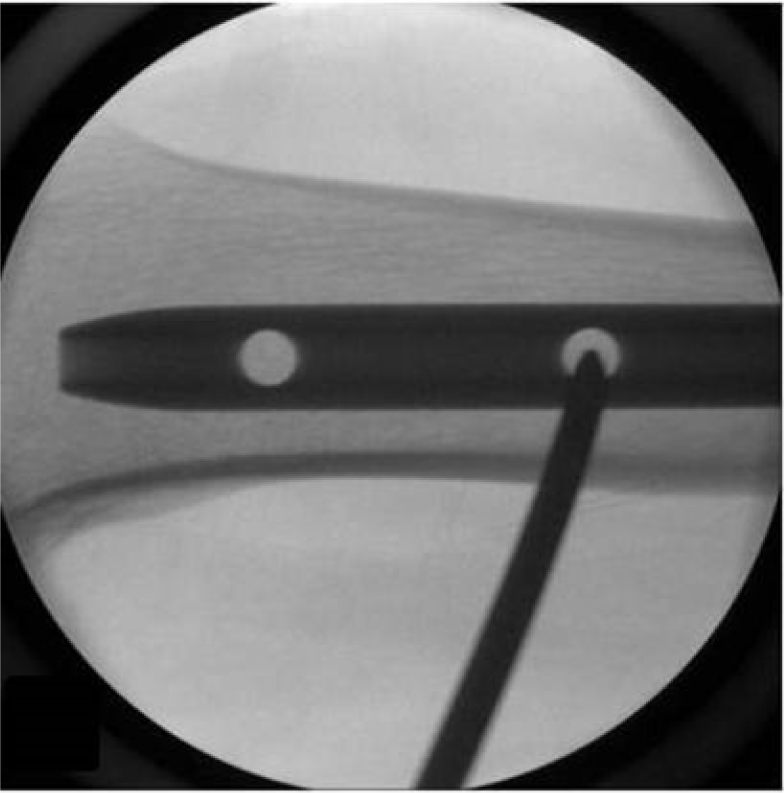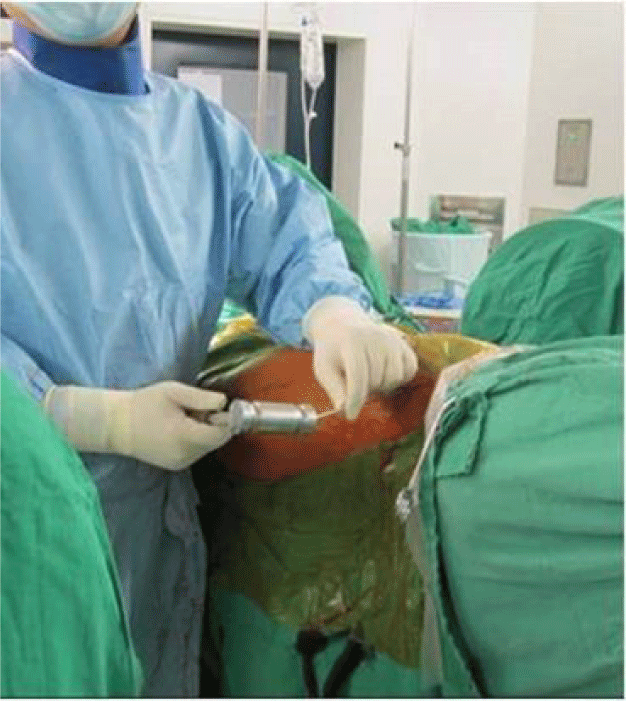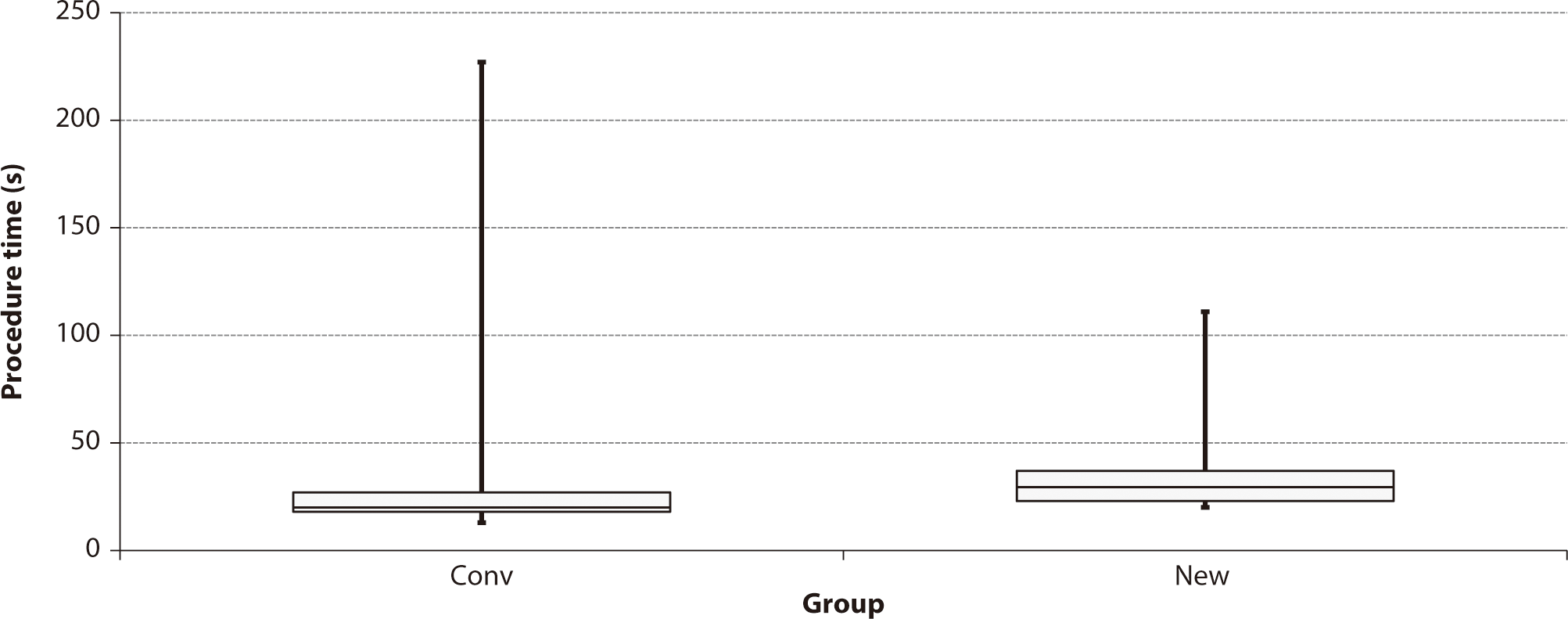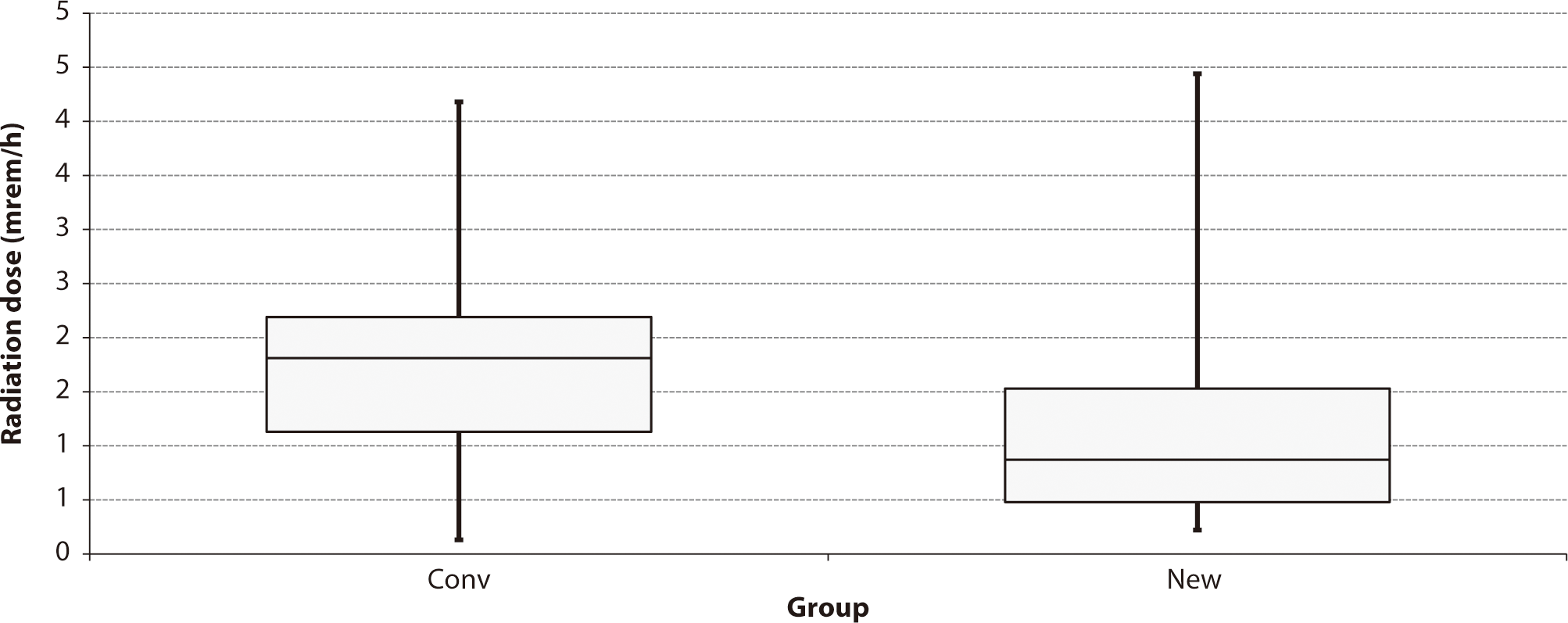Introduction
Intramedullary (IM) nailing is widely used in orthopedic practice and has recently become the gold standard for treating femoral and tibial diaphyseal fractures. This method is also occasionally employed for humeral shaft fractures due to its load-sharing characteristics [1,2]. To achieve rotational stability, surgeons may insert proximal and distal interlocking screws. While proximal screws are relatively straightforward to place using an aiming device, the placement of distal screws presents a challenge. This difficulty arises from the deformation of the nail within the medullary canal, which leads to misalignment of the distal locking holes. Consequently, distal interlocking screws must be inserted using a freehand technique.
Targeting the distal nail holes and accurately placing the distal interlocking screws with a freehand approach can be challenging, even for an experienced surgeon. This freehand method of distal screw insertion also involves a radiolucent drive, which may not be available. An alternative is to continuously monitor the projection of the drill bit’s tip. However, this approach is difficult and necessitates multiple radiological exposures. Ikpeme et al. reported that the distal interlocking procedure is time-consuming and increases the duration of surgery [3]. If the hole for the interlocking screw is drilled incorrectly, the pre-existing path can interfere with the creation of a new hole, as the drill bit may deviate and slide into the previously drilled hole.
The use of multiple drilling attempts can result in iatrogenic fractures and increased radiation exposure for both patient and surgeon [4,5]. In response, studies have introduced various modifications to the common freehand technique [6–9]. These approaches primarily involve the use of a smooth pin that is subsequently removed and replaced with a drill bit or the placement of a cannulated reamer over the pin. However, procedures that require reinserting the drill after pin removal are time-consuming and prone to failure [10].
Methods
No institutional review board approval or informed consent was necessary for this study, as the materials used were commercially purchased Sawbones.
In this comparative study, we evaluated the accuracy and time efficiency of the new technique. The findings were reported in accordance with the Strengthening the Reporting of Observational Studies in Epidemiology (STROBE) statement, which is accessible at https://www.strobe-statement.org/.
A first-year resident with no prior experience in inserting distal interlocking screws experimented on 18 femur Sawbones models (Sawbones, Vashon, WA, USA) with femoral IM nails (unreamed femoral nail; Synthes, Oberdorf, Switzerland). Following the insertion of the IM nail and proximal locking screws, the resident created two distal locking holes using both the conventional freehand technique and the new method, under image intensifier guidance. The study of this surgical technique was conducted at Gyeongsang National University Changwon Hospital.
A Steinmann pin matching the size of the drill bit was utilized; specifically, 1/8-inch (3.2 mm) and 5/32-inch (4.0 mm) Steinmann pins were employed for the tibia and femur, respectively. In the proposed technique, the Sawbones model is placed in a supine position on the operating table, with the limb adequately stabilized. Following thorough sterilization of the surgical site, the C-arm is positioned to be perpendicular to the limb. This orientation ensures that the screw holes appear as perfect circles on the fluoroscopic image, a critical factor for accurate visualization and the success of subsequent procedural steps.
The entry point for the Steinmann pin is determined with a high level of accuracy that reflects the precision of the freehand technique. The drill is then equipped with a Steinmann pin, positioning the tip in direct contact with the near cortex. To obtain a clear fluoroscopic image without the interference of a drill shadow, the Steinmann pin is held at an oblique angle to the shaft. Importantly, the tip of the pin must be precisely centered within the locking hole. Adjustments can be made in the proximal, distal, anterior, or posterior directions until optimal centering is achieved. Once the pin is centered, the drill is aligned parallel to the C-arm X-ray beam, and drilling into the near cortex begins.
During the drilling process, the drill is periodically tilted to ensure that the Steinmann pin remains centered in the hole. After confirming the correct positioning, drilling continues toward the far cortex. If the Steinmann pin contacts the nail or deviates from its path relative to the hole, the handpiece is detached from the pin, which remains inserted in the near cortex. The Steinmann pin is then adjusted by bending or tilting, as directed by fluoroscopic guidance, to realign it with the hole (Fig. 1).

Once the orientation is verified, the Steinmann pin is tapped with a hammer to advance it through the interlocking hole until it reaches the far cortex. Once in place, the pin is clamped into the drilling machine, and drilling through the far cortex is completed. An interlocking screw is then inserted through the newly created hole to ensure secure fixation (Figs. 2, 3).


Finally, the correct placement of the interlocking screw is verified using fluoroscopy. The surgical site is then closed in accordance with the standard protocol, and an appropriate dressing is applied. This meticulous technique increases the precision of distal locking hole placement during IM nailing, minimizing potential complications and improving surgical outcomes.
The outcome variables included the duration required to perform the surgical technique, the radiation dose to which the Sawbones were exposed, and the number of attempts required to successfully execute the technique.
The measurement methods were as follows. (1) The time taken to create the distal locking holes was recorded. This interval began at the Steinmann’s pin was positioned at the center of the hole and continued until the far cortex was drilled through the interlocking hole. (2) Radiation dose (mrem/h) was measured. A personal gamma radiation dosimeter (EcotestCARD; ECOTEST, Lviv, Ukraine) was attached to the lead apron worn by the operator to assess the radiation dose received throughout the entire procedure. (3) The frequency of attempts was noted, with failure defined as the establishment of more than one hole in the near and far cortex. The research data are available in Dataset 1.
We compared the results associated with the conventional and new techniques. Given the absence of normal distribution, all variables were analyzed using non-parametric statistical methods. The P-value was determined through the Wilcoxon rank-sum test. For statistical analyses, we utilized DBSTAT 5.0 (DBSTAT, Seoul, Korea), which can be accessed at http://dbstat.com/.
Results
The 36 trials involved commercially purchased materials, and no demographic data were collected.
The median times required for the conventional and new techniques were 29.5 and 20.0 seconds, respectively. The difference between groups was significant (Wilcoxon W=260.5, corrected Z=−2.963, P=0.0217, Fig. 4).

The median radiation doses to which the Sawbones were exposed were 1.81 millirem/hour for the conventional technique and 0.87 millirem/hour for the new method. The dose received with the new technique was significantly lower than that received with the conventional approach (Wilcoxon W=263.0, corrected Z=−2.2150, P=0.0268, Fig. 5).

The new technique required only one attempt to succeed, whereas the conventional technique took a maximum of four attempts (Wilcoxon W=297.0, corrected Z=−2.0889, P=0.0367, Fig. 6).

Discussion
A new technique for interlocking screw insertion during IM nailing, which utilizes a Steinmann pin and hammer, offers surgeons a time-saving approach with lower radiation exposure and fewer attempts compared to the conventional method not employing a Steinmann pin and hammer.
Two considerations are key when creating interlocking holes: the entry point and the drilling direction. The initial and most critical step involves precisely adjusting the C-arm to align the interlocking holes so they appear as a perfect circle. Drilling should commence only after achieving this circle. Our technique specifically addresses the second consideration, facilitating easy drilling. The most difficult aspect of drilling is that if the drill bit creates an incorrect hole, subsequent attempts to establish a correct pathway often fail because the drill bit tends to slip into the previous hole. In our study, we trained an inexperienced resident who then achieved a near 100% success rate, demonstrating an acceptable learning curve for this challenging procedure. Additionally, our technique resulted in less radiation exposure than the conventional method, despite a longer mean operative time. However, the conventional technique included an outlier value, indicating that once an error occurs, the procedure can take markedly longer to complete (Dataset 1).
Our proposed technique was designed to increase the precision of drill orientation. With the conventional method, the drill bit may not align correctly with the intended bone path, potentially failing to penetrate the near and far cortex holes of the nail at the appropriate angle. If the drill bit passes through the near cortex hole and the tip abuts the far hole, repositioning the drill bit can be challenging due to the pre-existing bone path. Should the surgeon opt to replace the drill bit with a Steinmann pin, the pin can be gently tapped into the far cortex hole of the nail, where it will slide into place. Notably, a Steinmann pin could also be utilized from the outset of the procedure.
A Steinmann pin was chosen over a drill bit for several reasons. First, a drill bit has a smaller core diameter and is stiffer than a Steinmann pin, increasing the risk of breakage when redirecting the bit within the bone. Second, the use of a Steinmann pin eliminates the need for secondary drilling, as the pin matches the drill bit in diameter. Third, unlike a drill bit, a Steinmann pin can be driven into the bone with a hammer. Finally, the Steinmann pin’s tip is both narrower and sharper than that of the drill bit, allowing it to gain purchase with the bone even if the initial hole is slightly misaligned.
We opted for a hammer instead of a drill because a drill attached to a Steinmann pin often obscures the radiologic view of the hole. Additionally, the drilling process can cause more damage to both the Steinmann pin and the nail. In contrast, when tapping the Steinmann pin with a hammer, the hole remains constantly visible. This method allows the Steinmann pin to slide into the hole without grinding against the nail. When the entry point is accurate, the success rate of inserting a Steinmann pin is nearly 100%. Even with a slightly inaccurate starting point, an interlocking hole can still be created using the hammer technique. However, this may result in the oblique insertion of the interlocking screw. Our technique appears beneficial and effective when a substantial distance separates the near and far cortices, or when the insertion site is located at the metaphysis rather than the diaphysis. Moreover, using a hammer to insert the Steinmann pin can help prevent damage to the surrounding soft tissue.
This study had several limitations. First, the clinical procedure differs from that performed on the Sawbones. In clinical practice, the soft tissues surrounding the femur could impede the accuracy of initial pin placement and the maintenance of the angle and location of the pin during drilling. Moreover, Sawbones are easier to drill than living bones, particularly those of younger individuals. Nevertheless, this study demonstrated significant differences between the two techniques when performed on the same Sawbones model. We expect these differences to be reproducible in real-world scenarios, although it may take longer to complete the procedure with either technique. Second, the sample size was primarily determined by the availability of resources rather than statistical power calculations. Finally, bias is a possibility, as the resident was aware of the technique being used. To address this concern and avoid a ceiling effect, we ensured that the resident was thoroughly trained in both techniques prior to the experiment to minimize any learning curve effects. Furthermore, we randomized the order in which the techniques were applied to each specimen to reduce the impact of systematic bias.
This new technique may aid in the insertion of interlocking screws during IM nailing procedures in hospitals around the world. Several companies manufacture instruments to support the precise placement of distal interlocking screws, such as the Radiolucent Drive (Synthes) and the Trigen Sureshot (Smith & Nephew, London, UK) [8]. However, these tools are expensive, and surgeons in underdeveloped or developing nations often cannot afford them. Our method employs a relatively inexpensive Steinmann pin, eliminating the need for costly equipment. Additionally, this technique is applicable to all types of IM nailing, including that of the humerus and tibia.
